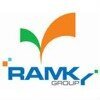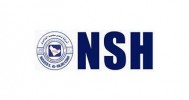
i
Steer Engineering
Filter interviews by
Steer Engineering Software Developer Interview Questions and Answers
Be the first one to contribute and help others!
Interview questions from similar companies

I applied via Approached by Company and was interviewed before Apr 2022. There were 4 interview rounds.

Knowledge of listening
(3 Questions)
- Q1. Skills related and knowledge base
- Q2. Skills need for Softwares and platform
- Ans.
Skills required for software development depend on the platform and technology used.
Proficiency in programming languages such as Java, Python, C++, etc.
Knowledge of software development methodologies like Agile, Waterfall, etc.
Familiarity with software development tools like Git, JIRA, etc.
Understanding of database management systems like MySQL, Oracle, etc.
Ability to work with different operating systems like Windows,...
- Q3. Area of specialization.
- Ans.
My area of specialization is web development with expertise in front-end technologies like React and Angular.
Expertise in front-end technologies like React and Angular
Proficient in back-end technologies like Node.js and Express
Experience in developing responsive and mobile-first web applications
Familiarity with database technologies like MongoDB and MySQL
(1 Question)
- Q1. Location and salary negotiation
Skills evaluated in this interview

Software Developer Interview Questions & Answers
L & W Constructionsposted on 17 Oct 2024
Good process from management side
Interview Preparation Tips

Application Developer Interview Questions & Answers
Oceaneering Internationalposted on 10 Jan 2021
I applied via Naukri.com and was interviewed in Jul 2020. There were 3 interview rounds.
Interview Questionnaire
2 Questions
- Q1. All questions were related to what was mentioned in JD.
- Q2. Interview went for 1 hour and it was taken by 3 people. One manager and 2 technical persons.
Interview Preparation Tips

Application Developer Interview Questions & Answers
Oceaneering Internationalposted on 25 Oct 2024
I applied via Approached by Company and was interviewed in Sep 2024. There was 1 interview round.
(5 Questions)
- Q1. Reverse the string
- Ans.
Reverse a given string
Use a loop to iterate through the characters of the string
Append each character to a new string in reverse order
Return the reversed string
- Q2. Merge sort on infinite linklist
- Ans.
Merge sort cannot be directly applied to an infinite linked list due to its divide and conquer nature.
Merge sort requires dividing the list into smaller sublists, which is not possible with an infinite linked list.
One approach is to break the infinite linked list into finite chunks, sort each chunk using merge sort, and then merge the sorted chunks.
Another approach is to use a different sorting algorithm that can handl...
- Q3. Operating systems
- Q4. System designing
- Q5. Object oriented programming
Skills evaluated in this interview


(3 Questions)
- Q1. What is orifice std and types of taps
- Ans.
Orifice std refers to standard orifice sizes used in engineering. Types of taps include flange taps, corner taps, and D and D/2 taps.
Orifice std refers to standard sizes of orifices used in flow measurement
Types of taps include flange taps, corner taps, and D and D/2 taps
Flange taps are used for large pipes, corner taps for small pipes, and D and D/2 taps for general applications
- Q2. What is pressure gauge operating range
- Ans.
Pressure gauge operating range refers to the minimum and maximum pressure values that the gauge can accurately measure.
Pressure gauge operating range is typically specified by the manufacturer.
It is important to ensure that the pressure being measured falls within the gauge's operating range to ensure accurate readings.
For example, a pressure gauge with an operating range of 0-100 psi should not be used to measure pres
- Q3. What is straight length requirements for orifice flow element
- Ans.
Straight length requirements for orifice flow element ensure accurate measurement by allowing flow to stabilize before reaching the element.
Straight length requirements typically range from 10 to 44 pipe diameters upstream and 5 to 22 pipe diameters downstream of the orifice.
These requirements help prevent flow disturbances and ensure accurate measurement of flow rate.
For example, if the pipe diameter is 4 inches, the ...
(3 Questions)
- Q1. Salary expectations and current ctc
- Q2. Describe about yourself and other information
- Q3. Why we should hire you and other similar questions.
Interview Preparation Tips

I applied via Walk-in and was interviewed before Jul 2020. There were 4 interview rounds.
Interview Questionnaire
1 Question
- Q1. Education and previous work details
Interview Preparation Tips

Senior Engineer Interview Questions & Answers
Oceaneering Internationalposted on 22 Feb 2022

(1 Question)
- Q1. Related to cad and design
Interview Preparation Tips

I applied via Job Portal and was interviewed in May 2024. There was 1 interview round.
(2 Questions)
- Q1. Stress strain curves
- Q2. Asme codes for oil and gas
- Ans.
ASME codes are widely used in the oil and gas industry to ensure safety and quality standards are met.
ASME B31.3 is the code for process piping in oil and gas facilities
ASME Section VIII is used for pressure vessels in oil and gas industry
ASME B31.4 is for liquid pipelines in oil and gas industry

Assistant Manager Interview Questions & Answers
Ramky Infrastructureposted on 10 Nov 2021
Interview Questionnaire
4 Questions
- Q1. What will you do when material is not received in time at site ?
- Ans.
I will assess the situation and take necessary actions to minimize the impact on the project timeline.
Check with the supplier for the reason of delay and expected delivery date
Evaluate the impact on the project timeline and inform the project team
Explore alternative options such as sourcing from a different supplier or adjusting the project schedule
Communicate the revised plan to all stakeholders and ensure timely deli...
- Q2. How do you manage the team ?
- Ans. Should maintain proper communication between team members. Good planning assists allocation of work responsibilities to team members, also it avoids irrational approach and duplication of works. As a best team player can complete the project within a specified time and budget.
- Q3. How do you calculate the cement and sand for 1 sqm cm 1:4?
- Ans.
To calculate cement and sand for 1 sqm cm 1:4, use the formula: (1/5.5) * 1 = 0.18 cubic meters of cement and (4/5.5) * 1 = 0.73 cubic meters of sand.
The ratio of cement to sand is 1:4
Calculate the total volume of the mixture, which is 1 sqm cm
Divide the total volume by the sum of the ratio (1+4=5)
Multiply the quotient by the individual ratio to get the volume of cement and sand
Convert the volume to weight using the de
- Q4. What is price escalation?
- Ans.
Price escalation refers to the increase in the price of goods or services over time.
It is a common phenomenon in the market due to inflation, changes in demand and supply, and other economic factors.
Price escalation can also occur due to changes in the cost of production, such as raw material costs, labor costs, and transportation costs.
For example, the price of gasoline may escalate due to an increase in the cost of c...
Interview Preparation Tips

Assistant Manager Interview Questions & Answers
Ramky Infrastructureposted on 13 Aug 2022
I applied via Approached by Company and was interviewed in Jul 2022. There was 1 interview round.
(2 Questions)
- Q1. What is my strength?
- Ans.
My strength is my ability to lead and motivate a team towards achieving goals.
Effective communication skills
Strong decision-making abilities
Ability to delegate tasks efficiently
Positive attitude towards challenges
Experience in managing teams
Motivational skills
Goal-oriented mindset
- Q2. What is my weakness?
Interview Preparation Tips
- Technicals
Tell us how to improve this page.
Steer Engineering Interviews By Designations
- Steer Engineering Design Engineer Interview Questions
- Steer Engineering Research Trainee Interview Questions
- Steer Engineering Business Head Interview Questions
- Steer Engineering Junior Mechanical Engineer Interview Questions
- Steer Engineering Business Analyst Interview Questions
- Steer Engineering Design Engineer II Interview Questions
- Steer Engineering Senior Manager Interview Questions
- Steer Engineering Technical Service Engineer Interview Questions
- Show more
Interview Questions for Popular Designations
- Senior Software Developer Interview Questions
- Associate Software Developer Interview Questions
- Lead Software Engineer Interview Questions
- Software Development Engineer II Interview Questions
- Software Engineer Interview Questions
- Software Development Engineer 1 Interview Questions
- Software Engineer Level 1 Interview Questions
- Java Software Developer Interview Questions
- Show more
Interview Questions from Similar Companies
|
Design Engineer
53
salaries
| ₹2.4 L/yr - ₹6.8 L/yr |
|
Assistant Manager
23
salaries
| ₹6.5 L/yr - ₹12 L/yr |
|
Junior Engineer
22
salaries
| ₹2 L/yr - ₹3.8 L/yr |
|
Quality Engineer
17
salaries
| ₹2.5 L/yr - ₹4.1 L/yr |
|
Deputy Manager
17
salaries
| ₹8.6 L/yr - ₹11.2 L/yr |

Sterling & Wilson

Nasser S. Al Hajri Corporation

Ramky Infrastructure

L & W Constructions
- Home >
- Interviews >
- Steer Engineering Interview Questions >
- Steer Engineering Software Developer Interview Questions









